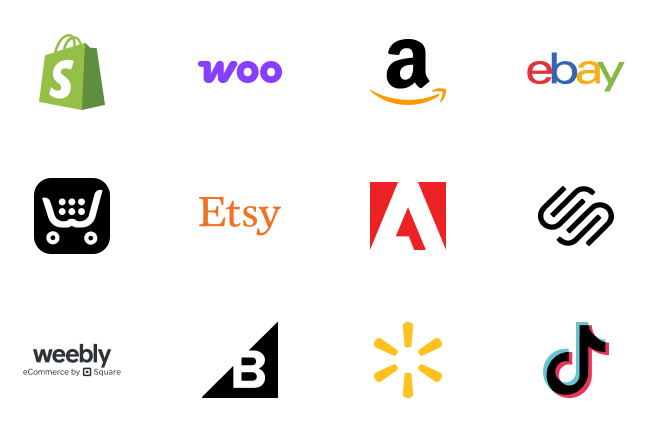The term "omnichannel" has been getting a lot of buzz lately.
In this post, we want to go over the basics of this concept, where shipping fits in this strategy, and ways to make sure your shipping strategy is in line with your online customers' demands!
But first - what is omnichannel eCommerce?
Omnichannel eCommerce the a concept of selling to anywhere by using multiple channels to sell products. It's easy to confuse this with multi-channel retail, which is the act of selling in both a physical space and online space.
However, the omnichannel idea also takes into account the customer experience, involving different channels that are used and integrated to formulate a purchase order.
For example, customers can purchase items both online and offline through mobile, desktop, by phoning in, and physical visits to the retail outlets.
The benefits of Omnichannel retail:
- Increased customer base, especially if you're a physical shop opening an eCommerce store. Thanks to the Internet, you can reach more people outside your local market.
- More customers means more revenue! 💰
- From the viewpoint of the customer, you are offering convenience and ease of use. Think about it: they can order, pay, and receive their purchase in any way they choose.
- Since omnichannel also emphasizes good customer service both in-person and online, orders are confidently placed, lessening the chances of returns.
How to develop an omnichannel strategy
Ready to start experimenting with omnichannel for your business? Consider the following when planning your strategy:
- Take the time to research your online target audience so you can make the most of each channel you sell on.
- Build your strategy around your customer and their data. In many businesses, customers are handled separately in different channels. Having customer information integrated in different channels is key to make this work.
- You should develop a system to acquire information from each transaction done, regardless of platform. Tracking customer preferences for certain products at a certain time will help you to know the demographics of your business and also the loyalty of customers.
- The focal point of the strategy should be the user experience and quality of services (especially shipping).
- As you will be handling multi-channel retail with different mechanisms for ordering and fulfillment, make sure communication between these parties are clear and optimized over time.
How to optimize the omnichannel experience
- The process should be user-friendly across all platforms and categorized so it is easy to manage on the sellers end, too.
- Managing returns and tracking can give you new opportunities for sales as it increases re-visits. Good communication with the customers throughout the process is a must to ensure the customer’s confidence in you.
- Find opportunities to save on fulfillment costs with your local market. Offer both in-store pickup or consider using same-day local couriers for faster delivery.
The importance of shipping in omnichannel eCommerce
When people start a business online, they tend to forget about their shipping logistics, which is a huge mistake!
It's also easy to feel overwhelmed about shipping, considering Amazon has set a high bar for customer expectations. Trying to compete by offering free two day shipping can turn out to be a very expensive experiment, hurting your profits and bottom line.
If there's any advice we can give you, it's that free shipping isn't the end-all-be-all marketing promotion it's made out to be. While Amazon has the luxury of losing money on shipping and not being held accountable for these losses, unfortunately, the same doesn't apply to you.
Instead, it's best to seek shipping solutions that squeeze out the best value in terms of price and speed of delivery.
How to optimize shipping in omnichannel retail
Now that we have established the importance of shipping in Omnichannel eCommerce, we should also discuss the things you can do to optimize your performance in the shipping departments.
- Offer free shipping in moderation. Many customers expect fast and free shipping, but not all. Consider offering free shipping during limited time periods, such as the holiday season. Or, you can offer free-shipping year-round for your local/domestic market only.
- You should make sure you get correct shipping information at checkout so you can avoid failed deliveries.
- Automatically send tracking updates to your customer, and stay in contact with them until the items are received.
- Work with multiple couriers. This will help you get cheaper and better rates for any place you ship to. Check rates with multiple couriers all in one place by using Easyship's Rates calculator.
- Have a return policy that allows returns from different channels for the ultimate customer convenience.
- Handling the logistics for increased sales volumes can be challenging. If you are feeling overwhelmed, consider using a 3PL to lessen the burden.
Conclusion
With planning, being willing to experiment, and putting the customer at the center of the process, you can make omnichannel retail work for your business.
To see omnichannel retail in action, read the story of one of our clients, The Gift Store. They have an amazing story about how they took over a brick-and-mortar business, re-branded it, expanded into eCommerce, and used Easyship to get their shipping under control!















































.svg)
.svg)






.avif)
.avif)

.avif)
.avif)


.avif)


.avif)










.avif)
.avif)



.avif)
.avif)


.avif)
.avif)


.avif)



.webp)







.svg)





